Blackberry is a garden berry, very resembling raspberries, but much larger, dark, almost black. It is not surprising that these berries and bushes are so similar: after all, they belong to one Rubus family and a rosaceae's pink-colored family, and many blackberry varieties are derived precisely by crossing it with Malina.
Description and main characteristics of blackberry garden
Blackberry has a lot of varieties, but the main types of shrubs are only two:
- bush blackberry, with flexible, semi-core barbed stems and dark blue berries (Rosyanka);
- shrub with reprehensive branches and berries, ripening in August, with a SIZY Tint. The shoots of such blackberries are covered with thin spikes and a light rode. Most often occurs in garden sites and the people are called the Kumanika.
Garden blackberry is plentifully fruitful and extremely unpretentious plant. Its popularity is gaining momentum, both in amateur gardens and in the zones of industrial plantings. Its berries are distinguished not only by the delicious taste and unique aroma, they are also endowed with therapeutic properties.
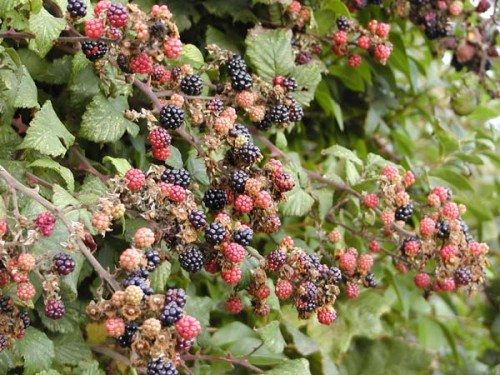
Blackberry Sadovaya - American in its origin, with a complex pedigree that fell into our land relatively recently. Both wild grades and alignment samples are very strong and hardy shrubs with shoots reaching 1.5-3 m in length; And some varieties have the length of shoots up to 8 meters! Blackberry leaves are quite large, rough and elastic, slightly spiny, with pointed, neat edges.
This plant with rather powerful shoots that need a support, which can serve as a fence, wall or other backups and fences. The main characteristics of blackberry:
- plant seedlings fruit large berries, the weight of one such berrose can reach 10-15 grams;
- berries in shape resemble raspberries, but can be an elongated form and reach 5 cm long;
- the crop from one bush can be up to 10-15 kg of berries - depends on the variety and age of the shrub;
- he has "in arsenal" both early and late varieties;
- blackberry can also boast of decorative purposes: blooms lush and abundantly, from its white colors appearing in the end of spring or early summer, simply not to tear the eye;
- thanks to late bloom, it is not subject to freezing, and therefore, it is plentifully fruits every year - from June to October, depending on the variety.
Many blackberry varieties specially adapted to our climate are frost-resistant, thanks to which the blackberry is also popular in the northernmost areas. This plant is steadily resistant to many pests and is rarely subjected to diseases.
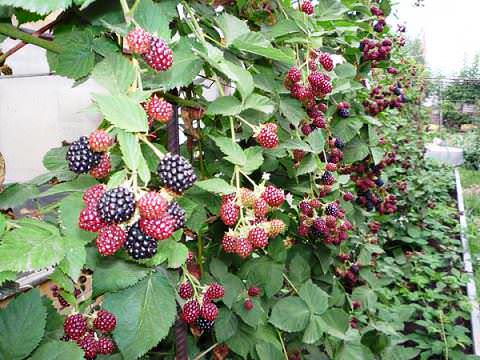
Sadovaya blackberry varieties
Wild blackberry - the plant is very unpretentious. It can create impassable thickets in the forest belt or calmly grow along the roads. As for an alignment plant, it is a little more demanding, its views are up to 40 samples. We will focus on the most common varieties in our edges.
- Agavam - one of their most common American varieties. Withstand freezing to -40 ° C. His shoots are very long, prickly and can linger in the form of the arch. Fruits with black berries not too large size (weight of 3-5 grams berries), which have a characteristic fragrance, sweet, with small acids. The yield of one bush is up to 4-5 kg \u200b\u200bof berries, high resistance rust and anthracnose.
- Darrow is a blackberry variety with reprehensive shoots. It differs from Agavam form of berries - they are slightly elongated, with glossy skin. Otherwise, these two varieties are very similar.
- Loganberry is an absolutely universal, late blackberry variety. It is a hybrid of large-scale raspberries and colostal blackberries. In addition to its amazing decorative qualities, it is characterized by high yield, large, sweet and fragrant berries (up to 10 g), resistant to diseases and "serial" fruiting: from August to the first negative temperature values. Vintage from one bush is more than 5 kg of berries. However, during the freezing period, Loganberry bushes should be thoroughly covered.
- Blackberry abundant - has sharpening shoots with bent spikes along the entire length of the stem. Berries are large, weighing 6-10 g, the crop from one shrub reaches 3-4 kg. The sort of late-growing, not particularly racks to frost. With good care and shelter from frosts, it may be fron with 10-12 years without transfers.
- Texas is a powerful shrub with flexible shoots that shake on the ground and covered with large spikes. The period of maturation of medium-variation, provides an annual, rather abundant yield, and under the condition of the feeding or good indicators of the soil fertility, can give a crop from one bush 6-10 kg. But capricious, poorly tolerates frost, needs shelter with leaves, tops or plants. Due to the serious length of the shoots of shrub, they need to be quenched for convenience: such a reception will also give a strong branching of the shrub.
- Bozyen is not too common in our gardens due to the intolerance to strong frosts. Powerful shrub with flutter shoots and large berries reaching 12-15 grams in weight. The fruits of such blackberry black and pretty soft, but fragrant and sweet.
- Tornfrey is a lack of blackberry with thick, up to 3-5 cm in diameter shoots. Its distinctive feature is the lack of replacing shoots. Leaves - dark green, 3 and 5-lamellar. Tornfree blooms with pink color, and multiply by green cuttings. Each of the fruit branches of the "birth" of 20-30 rather large, brilliant berries, each of which is about 4 cm long.
- Loch Tay - can be said, the best blackberry abbreast of early varieties. The shoots of such a shrub straight, smooth, without rigid spikes. The average weight of the berries of such a variety is 4-5 g, the fruits are glossy, dense and very sweet. Their collection begins in the middle of summer and continues within a month.
Features of blackberry cultivation and preparation for landing
Favorable conditions for disembarking and blackberry growth
Blackberry loves the sun. It grows and fruits and in the shade, but the berry sun is much larger and they are much more sweet. The optimal for blackberries is the average subline and fertile moisture-intensive soils, with small acidity, carefully explosion.
Blackberry seedlings are best to plant in spring, after the soil has been sufficient enough, and the kidneys have not yet blocked. If the planting process goes in the fall, then it must be completed before the first frosts - until the beginning of November.
How to prepare seedlings for landing?
You can buy Sadovo blackberry seedlings at any store or special shop of goods for garden sites. Usually, before landing in open soil, blackberry seedlings are directly in special plastic containers.

Special preparation such seedlings do not require. Before disembarking, it is recommended for 4-5 hours to hold seedlings in a solution of a special preparation, which will contribute to the rapid rooting. The preparation includes trace elements that will help a seedling carefully and quickly root in a new place. The same solution is poured after the completion of the landing.
Planting blackberry Sadovaya
Before planting a blackberry, you need to conduct preparatory activities. A few days before the boarding of blackberries, it is necessary to prepare the pits in which the landing will be performed. Pits must be quite voluminous: 45 per 45 cm, and in the depth - approximately halfter. The distance between the shrubs is important to withstand at least 1 m, and for varieties that greatly grow and abundantly sharpen - up to 2 m. If plants are planted with rows, then the interconnect distance is also at least 1.5-2 m.
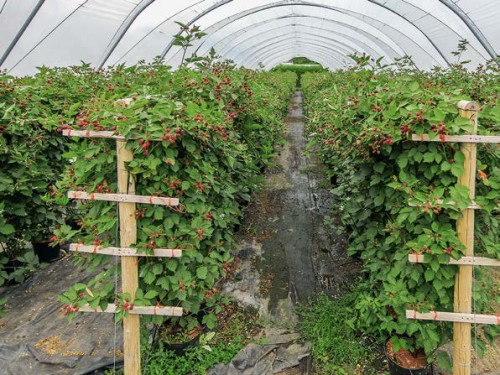
The reworked manure or compost is introduced into the hole, after which everything is thoroughly mixed and drove. It is recommended to make at least a handful of mineral fertilizer. It is not necessary to start the root neck deep into the pit: it is enough that the place where the stems go into the rhizome, it was deepened into the ground by 3-5 cm. The pit is falling asleep with a mixture of soil, which must be accurately moistened. Then you need to surround the landing site of a seedling by a low earthy mound and how to pour shrub.
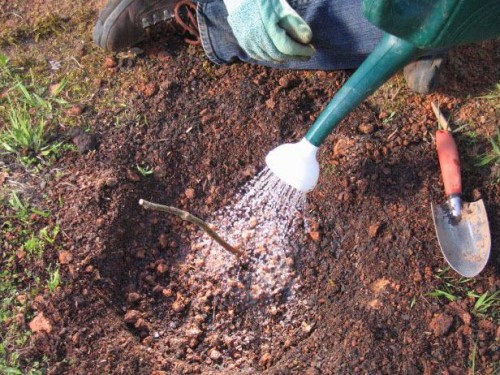
And although the blackberry requires a support if the landing is carried out in close proximity to the wall or fence, it is important to retreat 0.7-1.2 m from it, in order to avoid creating an abundant shadow fence.
The first spring growth of young saplings is the time to remove all their flowers, because in the first year of its growth in the open blackberry soil should send all its efforts to strengthen the root system.

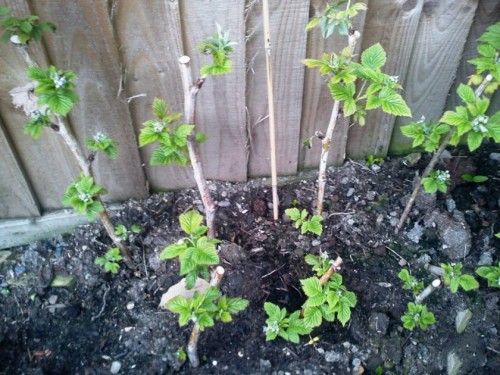
Saddy's Blackberry Care
Loosening and watering
The care of blackberry bushes is not tedious: you need to simply systematically carry the soil drainage, do not forget to water it, and also trimming and forming bushes. Blackberry rhizomes are more powerful than, for example, raspberries, so it is much more resistant to heat and drought. However, the soil should not displace: during the ripening of the blackberry berries need additional, uniform irrigation.
Molding blackberry bushes
The cultivation of blackberries is similar to the growth of raspberry bushes. Fruit the young plant will be from the second year of his disembarkation. Young shoots grow close to fruiting shoots - to replace "Old-timers." Forming and skulling blackberry also start from the second year after disembarking. Blackberry supports can:
- to be arched or fan - structures in the middle of the shrub, straightening it shooting up or horizontally;
- pose flat trellis - all shrub shoots are posted in one direction: Fruit-eyed - higher in a grinding, young, which will be froning in a year - below;
- to be located along the ranks of its growth is the most convenient way to fully use even the longest shoots.

It is very convenient and useful for the rainy growth of the plant at molding to separate the fruit stems from young, replacing shoots.
Trimming blackberry
In the first year, the growth of the plant pruning is practically not performed, only triggering all inflorescences, for proper rooting of the plant, and also remove the shoots of shoots after wintering.
In the second year of the life of the shrub, in the spring time, the stalks remove the length to 1.5 m for the best and more lush flowering and increase the crop. At the beginning of the summer, the bushes, who gave a lot of replacing shoots, thinning, cutting out too young, and leaving only a few strongest shoots.

At the end of June, the tops of young shoots are cut on 5-7 cm. The next year, these shoots will become fruitful. When the fruit is completed, it is recommended to remove the shoots from the cholera and crop the bases. At these places, the next season will place upgraded young shoots. If the escapes are not enough, then leave the best that remained out of the old. Annually early spring cropped frozen shoots and tops.
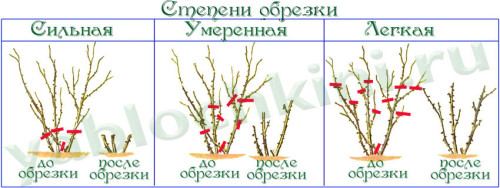
Garden blackberry reproduction
The reproduction of the plant is carried out both seed and vegetative method, and the first method is relevant until the onset of frosts.
Basic, universal multiplication methods for making and upright blackberries:
- Root or green cuttings.
- The method of dividing the bush.
The most effective way to divide the straightwork blackberry is its reproduction of root cuttings: early in the spring, when the soil warmed a little, dig a root with an earthen room with a diameter of 6-7 mm and a length of 10-15 cm and planted on a new, permanent place, having them in the soil at depth 5-7 cm.
Actual blackberry is relevant to reproduction, its landing is aspired. More details about the reproduction of blackberry and care for her, we offer to learn from the video:
Winter shelter blackberry garden
Some blackberry varieties, especially hybrids, are very sensitive to the external environment and require shelter for the winter. The shoots of the plant neatly, so as not to damage, be flexing to the surface of the Earth, are covered with fallen leaves or agrofine, after which they are carefully fixed. The bush at the most rhizomes is important to emphasize, as this will help the plant do not freeze even in conditions of a honest winter with strong frosts. Even if the above-ground part of the plant is frozen, saved in heat rhizome will give life to the seasures of replacement, which in a year will give the first berries.
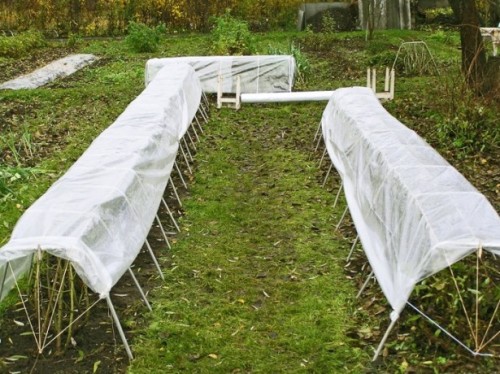
Seddow blackberry seedlings
In the first 3-4 years of growing blackberry, she does not need an organic feeding. From 4 years of her life in the open ground, organic fertilizers are entered under the rhizome: 1 bucket of humus under each adult plant. The universal way of feeding is watering blackberry shrubs with mineral fertilizers dissolved in water. Depending on the vegetation phase, it is recommended to make such types of fertilizers:
- with high nitrogen concentration;
- complex drugs for vegetation;
- fertilizers with predominance of potassium;
- complex phosphorus-potash fertilizers.
Pests and sickness of blackberry garden
The most dangerous disease of the garden blackberry is rust, capable of carrying more than half of the harvest. Disease can be warned and stopped in time, noting rust disputes - sticky light brown or orange mass, which covers the stalk of the plant and "sitting down" on his sheets. Filing, this mass forms a film: After that, you can see how the body of the plant is covered with fungus and ulcers, darkens. If it does not start fighting with the disease on time, the ignition of the stalks and shoots of the plant will begin.
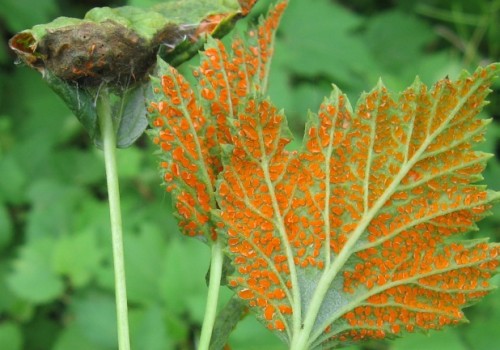
How to deal with rust?
- Raking and burn the leaves from the bush.
- Observe the balance of the moisture of the soil, with arid summer - to produce regularly.
- Delete weak branches: they only thicken the plant, weaken it.
- Produce a spraying of tincture of garlic.
It is the infusion of garlic, as well as a borodic mixture (400 g of copper sulphate + 40 g of lime on 10 liters of water) are very effective not only to combat rust, but also with other pests, such as TLL, ticks, weevils.
Annznosis is a frequent illness of blackberry shrubs and raspberries. On the shoots and leaves of the plant, violet specks appear, which in time deepen and turn into gray ulcers, formation with saturated red edges. The leaves of the plant begin to crack up, and the fruitful brushes - to fade, berries become brown and dry out, do not have time to hide.
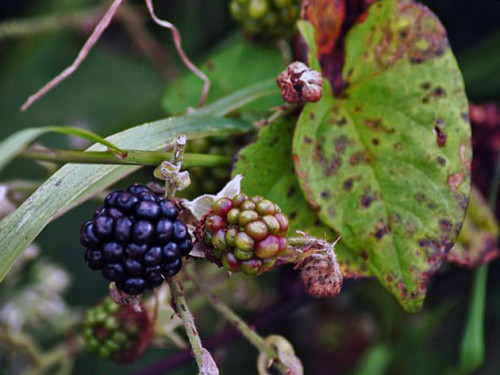
Methods of struggle - Blackberry bustle bushes are destroyed together with roots or burn out: only vegetables can be sowned to this place.
As for the pests, "love" blackberry (shooting failed, crimson beetles), the shoots engaged in them prematurely dry and die. Plants must be regularly sprayed with phytodeterm (2 ml per bucket of water) or a kinmix (the same concentration), and it is advisable to carry out treatment during the growing season.
Blackberry berries are not only very appetizing and delicious: they are also extremely useful. Moreover, it is wonderful in any form - fresh, frozen, as component of compotes and juices, and especially exquisited as part of jam. Blackberry leaves also carry colossal benefits and are used in phytotherapy in the form of tinctures and decoctions.
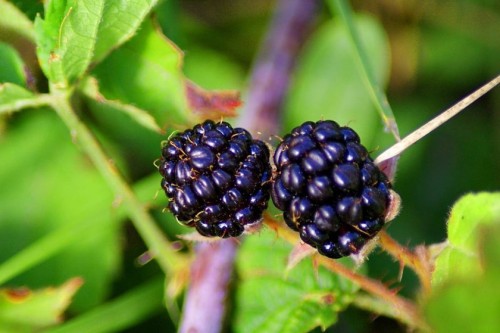

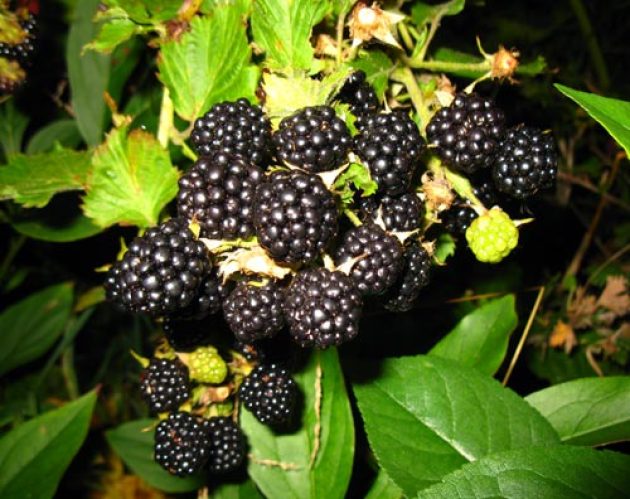
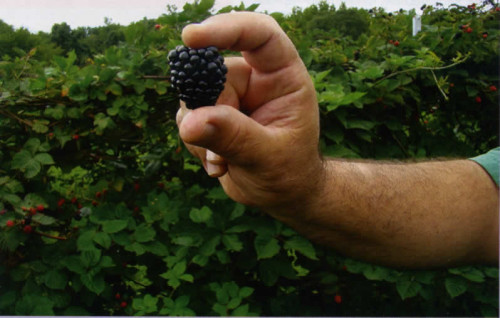
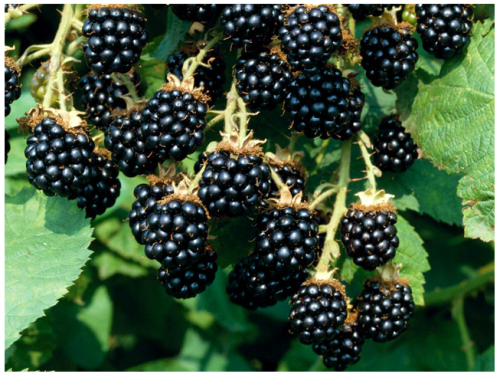
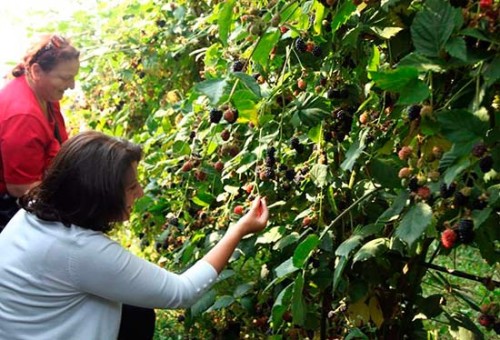












 Start a discussion ...
Start a discussion ...